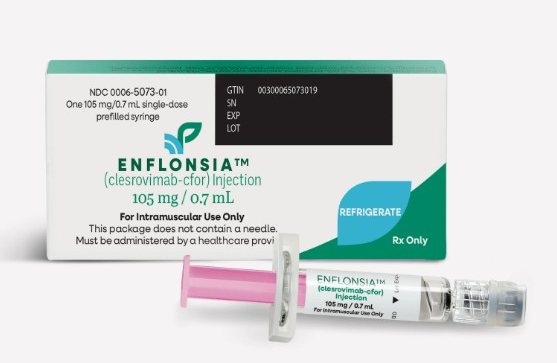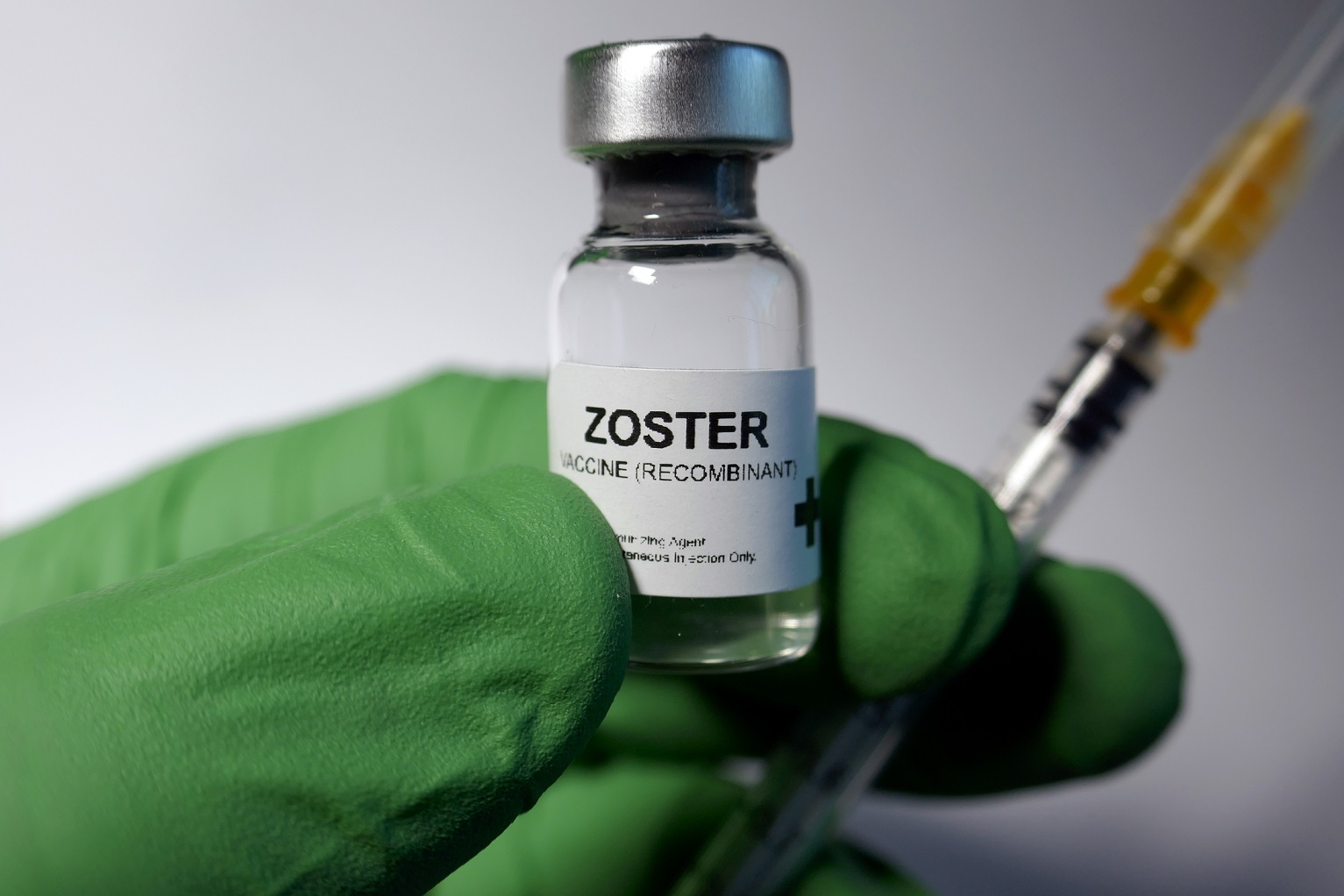- Formaldehyde, a recognized carcinogen and health hazard, is an increasingly prevalent environmental byproduct of industrialized practices.
- It is found in products ranging from pressed-wood products to cosmetics to vaccines.
- While most health agencies agree that infant exposure to formaldehyde in vaccines is safe, study data have only evaluated the inhaled, ingested, or applied compound; studies have not looked at how the body reacts to the injected form.
Warning of the dangers of formaldehyde in the workplace, the government’s own Occupational Safety and Health Administration (OSHA) says, “health hazards of formaldehyde are primarily due to its toxic effects after inhalation, after direct contact with the skin or eyes by formaldehyde in liquid or vapor form, and after ingestion” adding that “Ingestion of as little as 30 ml of a 37% solution of formaldehyde (formalin) can result in death” and “Diverse damage to other organ systems including the liver, kidney, spleen, pancreas, brain, and central nervous systems can occur from the acute response to ingestion of formaldehyde.”1
Yet, they don’t even mention the effects of exposure by injection, as when formaldehyde is pumped into a newborn baby as part of the HepB vaccine, currently given right after birth, or along with a host of other vaccine ingredients injected over the next few months of the infant’s life (click CDC Vaccine Expedient List to see how frequently formaldehyde shows up as a vaccine ingredient).2
Rationale for Using Formaldehyde in Vaccines
Most people first become familiar with noxious-smelling formalin, the liquid form of formaldehyde, in high school biology labs. It only takes a whiff to know the stuff is poison. But scientific and hospital laboratories are not by any means the only, or even the most common, sources of formaldehyde exposure. For one thing, formaldehyde is a natural byproduct of decomposition, and as such is found in very small amounts in most living organisms, from plants to animals, and including humans.3 In the limited quantities involved in natural exposure, as occurs when formaldehyde is produced, inhaled or ingested in tiny amounts, the chemical is rapidly broken down by specialized enzymes in the body and is either breathed out as CO2 or excreted in urine.4
It is this natural ability of the body to neutralize naturally occurring formaldehyde that is proposed as justification for using formaldehyde as a vaccine ingredient, although few data actually address the pharmacologic differences between ingesting or inhaling the chemical and injecting it, effectively bypassing the body’s usual method of breaking down the toxin. One might assume that, since formaldehyde is routinely used in many vaccines given to babies, even tiny and vulnerable premature infants, studies would have looked at whether it is safe to inject this poison directly into their immature systems. No such studies appear to have been done.
Increased Exposure in the Industrialized World
Residual levels of free formaldehyde (up to 0.02% is permitted by the U.S. Food and Drug Administration (FDA), used as a stabilizer or an inactivating ingredient, are found in vaccines against anthrax, diphtheria, hepatitis A, influenza, Japanese encephalitis, and tetanus.5 In addition to exposure via vaccines, today’s children (and adults) are exposed to much higher levels of the compound in general than were previously encountered. Formaldehyde is commonly found in many products and processes of industrialized society, where unsafe levels of the toxic gas may be inhaled, as with exposure to first- or second-hand cigarette smoke or to outgassing from preserved wood products or carpeting, applied unknowingly along with cosmetics or hair products.
In any of its many guises (in addition to formalin, formaldehyde also may be listed as formic aldehyde, methanediol, methanal, methyl aldehyde, methylene glycol or methylene oxide), not to mention other preservative chemicals known to release the gas as a byproduct, formaldehyde exposure is unavoidable in today’s world. It is encountered in cigarette smoke, gas stoves, and fireplaces; as a preservative in some foods; in household products including dish detergents and fabric softeners; medicines, cosmetics and hair products; glues and other adhesives; paper, plastics and wood products. It is also used in the manufacturing process for a myriad of products including fertilizers, paper, plywood, latex, leather, rubber, photographic film and processing, and sugar.6
Formaldehyde Is a Recognized Carcinogen and Health Threat
As represented by the National Institute of Environmental Health Sciences (NIEHS),7 a number of watchdog agencies including the American Cancer Society,8 the FDA,9 the National Cancer Institute (NCI),10 and others have classified formaldehyde as a known or probable cancer-causing agent, or carcinogen, and OSHA adds that it is not only a “complete carcinogen” but also “a sensitizing agent that can cause an immune system response upon initial exposure.”11 It is known to be highly irritating to the eyes and respiratory tissues and skin, particularly with repeated exposure.
Because of its classification as a toxin and carcinogen, strict guidelines are in place to define acceptable levels of formaldehyde, particularly for people considered to be at higher risk due to their environment (those living in FEMA emergency housing trailers or RVs,12 for example, or those with new carpeting13), or to their professions (embalmers, hair stylists using certain products and medical lab technicians among others). For workers at risk of exposure to high levels of formaldehyde vapors, OSHA recommends annual training to alert workers to the dangers of exposure above recommended concentrations (formaldehyde levels above 0.1 parts per million, or ppm, can cause respiratory irritation and levels above 0.5 ppm constitute an “action level” warranting “initiation of worker medical surveillance”14).
For the general population, the dangers of formaldehyde exposure have not raised significant concerns among regulatory circles, though there is no shortage of expert advice on minimizing exposure to the poison. The NCI recommends using exterior-grade pressed wood products (such as plywood, paneling, and particle board), ensuring adequate ventilation with use of formaldehyde-emitting products, and minimizing humidity in the home.15
California’s Air Resources Board adds that it is important to avoid cigarette smoke in enclosed spaces as well as fully ventilating spaces while using cosmetics that may include formaldehyde, such as nail polish and polish hardeners, when painting or putting up wallpaper, and during use of any type of gas-heating source (gas, kerosene or propane stoves as well as wood-burning stoves). That resource also recommends washing permanent press clothing to minimize formaldehyde inhalation.16
Little Is Known About Injected Formaldehyde
In the majority of studies, human data on the toxic effects of formaldehyde refer to the compound inhaled as a gas, and it is generally reported to be essentially harmless and easily metabolized, with most governing bodies agreeing that the small amounts inhaled, ingested, or injected in vaccines are safe for even the smallest of infants. A model-based study, “assuming metabolism at the site of injection only,” reported that “formaldehyde is essentially completely removed from the site of injection within 30 minutes,” and used that modeling data to predict that infant systemic levels would reflect less than 1% of the usual environmental exposure level.17
The Food and Drug Administration reports that, “There is no evidence linking cancer to infrequent exposure to tiny amounts of formaldehyde via injection as occurs with vaccines.”16 What they do not seem to consider is that infants are systematically given multiple doses of vaccines at one time, so it is the combined level of formaldehyde exposure that needs to be calculated, not the amount in a single vaccine dose. According to Dr. Sherri J. Tenpenny’s Integrative Medical Center, by the time a child has reached 5 years of age, he or she has been injected with a total of 1,795 micrograms (mcg), or 1.795 milligrams of formaldehyde, as follows18:
- Hepatitis b – 3 doses x 15 mcg each
- DTaP – 5 doses x 100 mcg each
- Polio (IPV) – 5 doses x 200 mcg each
- Influenza – 6 doses x 25 mcg each
- Hepatitis A – 1 dose x 100 mcg each
Valid Questions Remain Unanswered
Little data address the differences in metabolism that may occur when formaldehyde is not inhaled but injected, as occurs with vaccines, or the differing levels that may or may not be tolerated by infants and children compared with adults. Even animal studies generally look only at inhaled or applied formaldehyde. One very old study, however, showed that even highly diluted formalin (formaldehyde in liquid) caused serious health issues in study animals, regardless of method of administration.
Although such a study can’t take the place of evaluation in humans (or more up-to-date laboratory evaluation), the author of that study reported that intraperitoneal (injected into the body cavity) formalin had “a destructive action” on any organ it came in contact with, including the pancreas, liver, peritoneal fat, and fallopian tubes; injection into the lungs caused pneumonia and bronchitis; and injection into muscle or under the skin (both of which are routes commonly used for administration of vaccines) caused significant inflammation. The author concluded that “formalin in whatever way introduced into the body is absorbed, and is then capable of producing lesions” in the affected organs.19
Just because the human body appears capable of processing and eliminating a certain minute level of formaldehyde when it is encountered in the everyday modern environment, does not mean it is safe to repeatedly challenge the immature immune system of an infant or child with such a toxic substance.
References:
1 OSHA. Medical Surveillance—Formaldehyde. Occupational Safety and Health Standards.
2 CDC. Vaccine Excipient & Media Summary. February 2015.
3 National Cancer Institute (NCI). Formaldehyde and Cancer Risk. June 10, 2011.
4 U.S. EPA Archive. Public Health Statement: Formaldehyde. TEACH Chemical Summary Sept. 20, 2007.
5 Wang H, Del Grosso AV, May JC. Development of an HPLC Method for the determination of Formaldehyde in Human Vaccines. U.S. Food and Drug Administration(FDA) Science Forum Aug. 28, 2008.
6 CDC. Public Health Statement: Formaldehyde. Agency for Toxic Substances and Disease Registry (ATSDR).
7 National Institute of Environmental Health Sciences (NIEHS). New Substances Added to HHS Report on Carcinogens. June 10, 2011.
8 American Cancer Society. What Is Formaldehyde? May 25, 2014.
9 Effects of Formaldehyde Exposure on Human NK Cells in Vitro.
10 National Cancer Institute (NCI). Formaldehyde and Cancer Risk. June 10, 2011.
11 Occupational Safety
and Health Administration (OSHA). OSHA Fact Sheet: Formaldehyde April 2011.
12 CDC. FEMA-Provided Travel Trailer Study. Centers for Disease Control and Prevention Study Reports Feb. 14, 2008.
13 U.S. EPA Archive. Public Health Statement: Formaldehyde. TEACH Chemical Summary Sept. 20, 2007.
14 Occupational Safety
and Health Administration (OSHA). OSHA Fact Sheet: Formaldehyde April 2011.
15 National Cancer Institute (NCI). Formaldehyde and Cancer Risk. June 10, 2011.
16 Mitkus RJ, Hess MA, Schwartz SL. Pharmacokinetic Modeling as an Approach to Assessing the Safety of Residual Formaldehyde in Infant Vaccines. Vaccine June 7, 2013.
17 California Environmental Protection Agency. Reducing Your Exposure to Formaldehyde. August 2004.
18 Tenpenny S. Formaldehyde in Vaccines. Tenpenny Integrative Medical Center. Jan. 29, 2013.
19 Fischer MH. The Toxic Effects of Formaldehyde and Formalin. Feb. 1, 1905.












23 Responses
I can’t imagine putting this chemical (or any) into a vaccine for babies…..brand new, innocent, immune systems! We bought a vinyl (leather-like fabric they said) couch and just sitting on it for a month made me so sick with coughs, flu-like symptoms, achy, no energy, etc., that we’ve moved it to the garage and are trying to get rid of it. It’s a $1400 lesson learned! I’ve researched and found all the ways we are exposed to this chemical in our beauty products, plastic products (including insoles in shoes), building materials, carpets, etc. So if that’s not bad enough for the adults, now we’re going to shoot it directly into our innocent children? I don’t think so. Thanks for the info…..really appreciate it!
It’s also used as a preservative in Pitocin (oxytocin used in lore gang mothers who are in labor).
It’s Got NOTHING Whatsoever To Do With The Health Of Our Children……….It’s ALL About Making Money!!!
#GetINFORMED #NOHPVmandateRI
There is little argumentation based on the science and dosage. The authors of this article make the SAME mistake that the vaccine pushers are making: not relating the dosage to toxicity. What dosage was used in the Fischer study (ref 19)?
Poor quality argumentation like this is why vaccine critics and NVIC in particular are not taken seriously. By publishing this garbage, NVIC and TVR are making vaccine critics look stupid.
There are some very well supported scientific reasons why vaccines are dangerous and damaging, but formaldehyde is not one of them. See our website vaccinepapers dot org for rational, scientific reasons why vaccines are dangerous.
The limits in air are based on 8 HOURS daily exposure. People breathe about 20 cubic meters of air per day. So the formaldehyde limit of 0.1mg/m^3 translates into inhalation of about 650mcg per day, every day. The lungs are especially sensitive to formaldehyde, much more so than other body tissues. The body rapidly oxidizes formaldehyde into other substances of lower toxicity.
Formaldehyde from foods is rapidly absorbed, and rapidly metabolized (minutes). And many foods contain a lot, typically 5-30mg/kg! Its not biologically plausible that injected formaldehyde in small dosages from vaccines will cause any difference in exposure or kinetics. All or most body tissues produce formaldehyde and can process it.
But if TVR has some evidence that formaldehyde is dangerous, they should show it and explain it. This article completely fails to make the case that formaldehyde in vaccines is dangerous.
yeah? You pro-vaccine types are just controlled opposition at best.
“My site has several articles by the Nobel Laureate Alexis Carrel regarding injections of highly dilute poisons, similar to formaldehyde in Salk vaccine, which was 1:4000 concentration. Carrel injected carcinogens at 1:5000 to 1:250000 and caused reliably, cancer in chickens.”—Jim West (Harpub http://whale.to/a/west_h.html
What about vaccines used during pregnancy like flu shot and this study saying bout mutagenic effects of formaldehyde in mammalian cells?
Could you say something about it, sir?
https://pdfsecret.com/queue/cellular-and-mutagenic-effects-of-formaldehyde-in-mammalian-cells_5a3284b0d64ab21233931336_pdf?queue_id=-1
Well then LET’S DO THE STUDIES!!!!!!!!!!!!!!!!!!!!!!!!!!!!!!!!!!! You can NOT SCIENTIFICALLY claim that it won’t do harm, if it’s never been tested.
Uh,
Formaldehyde, when Oxidized, becomes Formic Acid – which is even MORE toxic, internally!
You’re a stooge and science-denier!
Ever wonder WHY ant-stings “sting” in the first place? ? ? – Because you have been stung by Formic Acid being injected into your skin! Now imagine what Formic Acid does when it occurs deeper in the body (through oxidation of Formaldehyde).
Plus,
Your contention that our bodies “naturally” produce Formaldehyde in the tissues is another one of those “bait-and-switch” type arguments lacking any valid science supporting your claim that “Formaldehyde is not so dangerous”. IF any Formaldehyde is produced within the body, it is in such tiny amounts (as in partial metabolism of some fatty acids) and is very short-lived. The body seeks to expel it is quickly as possible (or recombines it for the purposes of making it more soluble in water – for faster elimination).
Like I’m saying,
You’re just another stooge, and keep trying to lie about it, because not all of us are science-ignorant.
[…] Dr. Sherri J. Tenpenny’s Integrative Medical Center, by the time a child has reached 5 years of age, he or she has been injected with a total of 1,795 micrograms (mcg), or 1.795 milligrams of formaldehyde, as follows Read more… […]
For those who love the “Fabuloso” floor cleaner, be aware that it has formaldehyde in it. I had such a bad reaction to it that I looked up the MSDS for that product…..very enlightening. There is no end to the poisoning of the people.
Now Vaccine papers, you make claims that this formaldehyde article is not scientific and doesn’t present its case well. I disagree. It clearly states that the studies are scarce and more needs to be done. Yet, you make statements that themselves are not scientific! For example, you state, “its (it’s) not biologically plausible that injected formaldehyde in small dosages from vaccines will cause any difference in exposure or kinetics. All or most body tissues produce formaldehyde and can process it.”
However, you don’t supply any evidence to support these statements! Your body DOES process injected items different from ingested ones…this is common knowledge, so kinetics WILL be different, not the same! So you should be more careful about your criticism of others’ work. Yes, the NVIC article wasn’t perfect, yet its statements are correct, it DOES need more studies and these simply haven’t been done. I personally wouldn’t want ANY formaldehyde injected into my body, whatever the amount.
“They” make the same kind of argument about how the body handles Mercury.
There is a HUGE difference between what enters via the digestive tract, from what enters subdermally!
CDC: Formeldahyde is extremely dangerous. Don’t touch, inhale, or smoke it. But go ahead and inject it directly into your blood stream so that you bypass your respiratory system and the primary part of your immune system.. That’s fine.
How does that make any amount of sense?
All the same circular arguments they made about Mercury exposure.
So toxic, that all environmental Mercury spills have to be cleaned up “Super-Fund” crews, BUT – – – It’s apparently safe enough to inject into our young children! ! !
What’s wrong with you people??? Can’t you see that illness of all sorts is important for our economy? Hospitals will have to close. Drug makers will be out of business. Doctors and nurses will be forced to get a real job.
Seriously, if we clean up the environment and get rid of the disease-causing chemicals the economy of the entire world will collapse. Besides… vaccines are harmless compared to all the other chemicals that have been killing plants, animals, mammals, and fishes for millions of years. Seriously, chemicals are the major cause of genetic mutations that you pass on to your children. Really… its all about our genes. Got clean genes and formaldehyde is NO PROBLEM!
Have a heart; billions of people work in medicine… what are they gonna do if your kid don’t get sick?
Capt. David Williams
Deafwhale Society
*** SARCASM ALERT! ***
in case most people don’t know this, but the amount of formaldehyde that an infant should be exposed to, is 0.7 mg at maximum, and most vaccines contain the following:
Hib-vaccine (hib-meningitis) – 0.005 mg.
Influenza-vaccine – 0.005 – 0.1 mg.
Hepatitis A: Havrix – 0.05 mg.
Hepatitis A: Vaqta – 0.0004 mg.
DTaP – 0.005 – 0.1 mg.
DTaP-Hep B IPV – 0.1 mg.
(more are listed here in the link below)
formaldehyde is essential for the synthethis of proteins in the body, and the amount contained in an 2-month old baby, assuming it weighs about 5 kg, and has an average blood volume of 85 ml/kg, it would contain 1.1 mg formaldehyde (seeing as blood contains about 2.5 ug, micro-liters or a millionth part of a liter, per ml of blood). A value 1,500 times greater than what is contained in any individual vaccine, and quantities at least 600 times greater than the amount contained in vaccine have been safely fed to animels through drinking water.
you can read more about it on here, or search on your own:
https://www.chop.edu/centers-programs/vaccine-education-center/vaccine-ingredients/formaldehyde
Vaccines – Vaccines ~~~ You are all Wrong !! The Question you Should ask yourself !! How Toxic are you ??? We Prevented Autism ~~ Yes !! 28 Mothers , 5 Years Before Conception , Went on an Organic Plant Based Diet — The results ?? Each Mother has Three Children , All The Vaccines & No AUTISM !! How is this possible ? If you all stop being Stupid !! Google ” Environmental Chemicals in Pregnant Women in the United States – NHANES – 2003-2004 Tracey J. Woodruff ~ The United States has the Highest Rate of PBDE in the World !! Secondly more of the food we are allowed to eat in the USA, Are Banned Through out the World !! Just a few of the list of ~~ 33 Items ~~ Frosty Flakes – Fruit Loops ~~ Farm Raised Salmon – Kellogg;s Rice Krispie Treats – Americans Fail Time And Time Again , to look at the food that they are ingesting ! Most Toxic Meat to Eat ? Chicken ~ Mercury ~ PCB’s ~ Arsenic ~ Lead ~ Feather Meal ~ Etc We stand by this ~ Christopher Spencer e-mail address ” [email protected] ” 646 796 8519
The Food the mother eats through the Preganancy , You are lucky the neonate lived ! Do you know what is in bottled water ?? What all the sodas ?? So , through the pregnancy – Dairy – With all the viruses and Bacteria – MAP – Bovine Leukima Virus ~ Caso Morphine ~ The Plastics from the hoses used in miliking ~~ Then Eggs — How much Aluminim Do Want in Your Cheese ??? How Toxic Is Propylene Glycol? The main sign of toxicity is central nervous system depression. Symptoms include a slower rate of breathing, decreased heart rate and loss of consciousness ~~ Pregnant women, children and infants under four years of age have lower levels of an enzyme known as alcohol dehydrogenase. This enzyme is essential for the breakdown of propylene glycol ~~ Thank you , for your attention ~~
You’re a dis-info troll!
BTW, I don’t trust GOOGLE for any of the right answers! They are known and documented to censor and filter out ANY information (no matter how scientifically solid and backed by data) that they do not agree with. GOOGLE does its best to stop all debate on certain issues.
So, you go GOOGLE all you want, while the rest of us more intelligent folks use a wider array of sources, and see ALL sides presented on any issue.
Thank you, and good day!
In regards to Bogason’s comment- I was intrigued about the site you posted until I noticed the numbers weren’t matching up regarding how much was in each vaccine. (http://www.vaccinesafety.edu/components-Excipients.htm states this per vaccine.) Annnnd then I saw at the bottom of the site you recommended that Offit oversaw that page. He is paid and funded by the vaccine industry, via patents. This is NOT an objective source of information. FYI.
BINGO!
Expect more “sympathetic trolls” to try to mire the discussions on vaccines.
Plus,
Formaldehyde is NOT all that necessary for the synthesis of proteins, amino acids, etc. – It is more a temporary by-product of partial metabolic action. The body treats it accordingly, as a poison.
Good respond in return of this issue with solid arguments
and explaining all concerning that.
There is more to be concerned about other than just the formaldehyde in these vaccines. This is not to say that the formaldehyde is not a problem. It is. But you never mentioned all the other toxic substances in the vaccines that are listed on the CDC Document that you provide in your article. Here. I listed them for you….
CDC Toxic Vaccine Expedient (Substances) List
Vaccine excipient and media summary PDF Document
Formaldehyde
Vero monkey kidney cells
Aluminum phosphate
Aluminum hydroxide
MRC’5 (human diploid) cells
Canine (MDCK) cell protein
Thimerosal (mercury)
Human serum albumin
W1-38 human diploid fibroblast
Recumbinat human albumin
Mueller-Miller casamino acid medium
Human embryonic lung cultures
Embryonic Ginny pig & bovine serum
Detergent
Acetone
Sodium borate (Borax) Rat poison
Polio- streptomycin
Monkey kidney cells
Human serum albumin
HPV- insect bacterial and viral protein
Amorphous aluminum
Link to the CDC PDF of these substances listed above is at the the following link…. You will find the link in the article.
https://thevaccinereaction.org/2015/11/formaldehyde-a-poison-and-carcinogen/